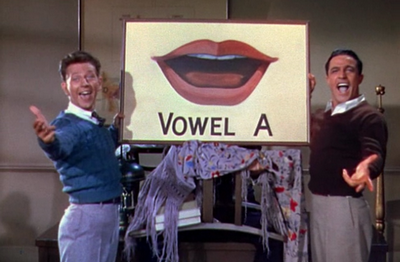- Home
- WELCOME TO THE NEWSROOM
- How to strike the right vocal chords in a job interview
How to strike the right vocal chords in a job interview
Written by Sanderson Recruitment | Blog | Posted 04/02/2015

Way before we learned to speak, human beings found ways of communicating with each other. Even now that we have exquisite and complex language skills, we still trust what we see and sense more than the words themselves; no one believes a person who insists “I’m fine” whilst avoiding eye contact and folding their arms.
Only 7% of what we communicate is through words themselves, and the remaining 93% (including the tone of your voice) couldn’t be more important than in a job interview!
We have already covered body language, so now we are tackling the tricky business of managing the tone of your voice. We all know how important it is to express yourself with confidence and clarity, but if you have been disheartened by the mass of articles telling you certain types of voices don’t lend themselves to authority (and worse that there is nothing we can do about it), then think again. No matter what your voice, there are ways of managing, controlling and optimising it. Speech pathologist and vocal coach Susan Miller says that although an unengaging voice can cost you the job, “all of these things can be modified, and rather quickly. It takes practice, but to just become aware of it and to learn from techniques to change it… makes a huge difference.”
So here are a few simple methods which will help you hit the right notes!
1. Warm up
The tongue is a muscle, and needs stretching before an interview just as your legs need stretching before a run. If saying ‘Moses supposes his toeses are roses’ over and over to yourself is good enough for Gene Kelly, try and get some tongue-twisters in beforehand! This will loosen up your throat and jaw, stopping you from getting tongue-tied.
2. Use fewer fillers
Fillers can be sounds, like ‘umming and ahing’, but also words such as ‘like’. We often use fillers when thinking hard, which is fine, or when we feel the need to fill silences, which is bad. Have the confidence to let your words land; place them down on the table and trust that they are enough, without feeling the need to fill the space. Fillers aren’t fatal in small doses, but you must learn to rely on yourself. You are an articulate human being!
3. Lower the tone
You may have noticed that powerful figures, both real and fictitious, speak slowly and in deep voices (think Obama, Mufasa or Darth Vader). Unfortunately, many of us fall into higher pitches when we are nervous, which can make us seem uncertain or incapable (think Snow White or Scooby Doo’s Shaggy). Margaret Thatcher had elocution lessons to try and make her voice as iron as the lady.
But we are all individual, and our unique voices are part of our personality no matter how high or low they are. You can inject power and trustworthiness into your voice simply by clearing your throat, taking a comfortable breath and speaking slowly and clearly.
4. Project your voice
Roll your shoulders back and direct your voice directly towards the person you’re speaking to. Making eye contact will help with this. If there is more than one interviewer, make sure you are thinking about making your voice reach the person furthest from you; this way everyone is sure to hear you clearly. Breathe from your diaphragm by filling your belly when you inhale, not your throat or chest.
So whilst you must never underestimate how important tone of voice is, you musn’t overestimate how hard it is to make the most of it either. The techniques above are simple; all it takes is practice! After all, she sells sea shells on the sea shore because she said she sells sea shells on the sea shore sixteen times before her job interview.